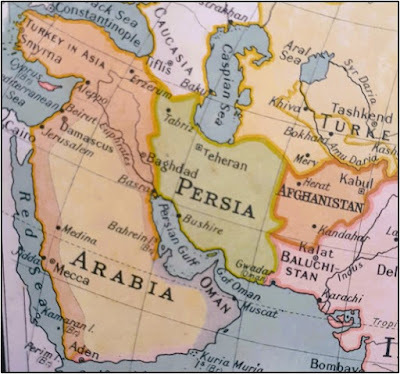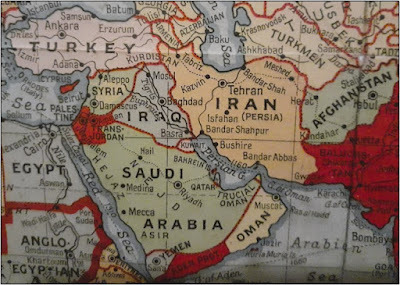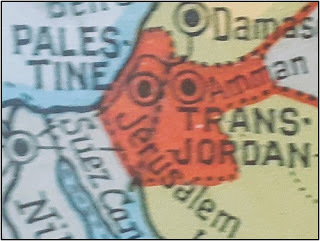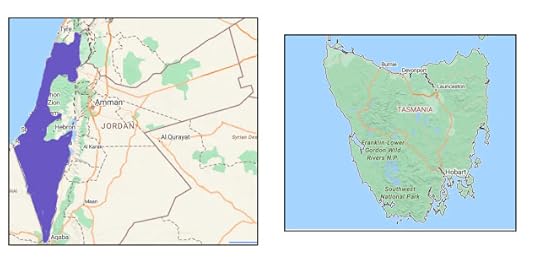The Holy Land - from old maps and literature.
I am the proud possessor of a 1915 Australian Atlas, and an AMP Map of the World published shortly before the outbreak of World War 2. I am including them in my blog 'War in the Balkans' because the task of reconstructing the Middle East following the anticipated fall of the Ottoman Empire was a problem much considered by the West throughout the nineteenth century and particularly after the First and Second Balkan Wars in 1912 and 1913. Why the West should have embraced it as their problem says a lot about the thinking of the time. It was also due to the discovery of oil in the Middle East in 1908 by the British and their establishment of oil fields during the 1920's and 30's.
The Middle East in1915

1939

The Middle East in 1939

The British Mandate of Palestine 1920 - 1948

Palestine compared with Tasmania, Australia

In 1922, Winston Churchill gave away 75% of the British Mandate of Palestine to create the modern Arab nation of Jordan.

In 1948, the remaining land was partitioned to create the State of Israel.

In 1867, Mark Twain made his famous visit to the Holy Land
A fast walker could go outside the walls of Jerusalem and walk entirely aroundthe city in an hour. I do not know how else to make one understand how small itis… The population of Jerusalem is composed of Moslems, Jews, Greeks, Latins,Armenians, Syrians, Copts, Abyssinians, Greek Catholics, and a handful ofProtestants...The nice shades of nationality comprised in the above list, andthe languages spoken by them, are altogether too numerous to mention. It seemsto me that all the races and colors and tongues of the earth must berepresented among the fourteen thousand souls that dwell in Jerusalem. Rags,wretchedness, poverty and dirt abound. Lepers, cripples, the blind, and theidiotic assail you on every hand. To see the numbers of maimed, malformed anddiseased humanity that throng the holy places and obstruct the gates, one mightsuppose that the ancient days had come again, and that the angel of the Lordwas expected to descend at any moment to stir the waters of Bethesda. Jerusalemis mournful, and dreary, and lifeless. I would not desire to live here
Herodotus – The Histories (c. 446 BC)
The Syrians of Palestine (and the Phoenicians) have a tradition that in ancient times they lived on the Persian Gulf, but migrated to the Syrian coast where they are found today. This part of Syria, together with the country that extends southward to Egypt, is all known as Palestine…They practise circumcision…[and] the custom is evidently a very ancient one.
Suetonius – The Twelve Caesars
An ancient superstition was current in the East, that out ofJudea at this time would come the rulers of the world…The rebellious Jews readit as referring to themselves, murdered their Governor, routed the Governor ofSyria when he came down to retore order, and captured an Eagle. To crush thisuprising the Romans needed a strong army under an energetic commander…Thechoice fell on Vespasian (66AD).
Pliny the Elder – Natural History (AD 23 – 79)
On the west side of the Dead Sea, away from the cost, lives the solitary tribeof the Essenes…Below them was the town of Engeda (Joshua 15,62), second only toJerusalem in the fertility of its soil and in its groves of palm trees but now,like Jerusalem, another heap of ashes



